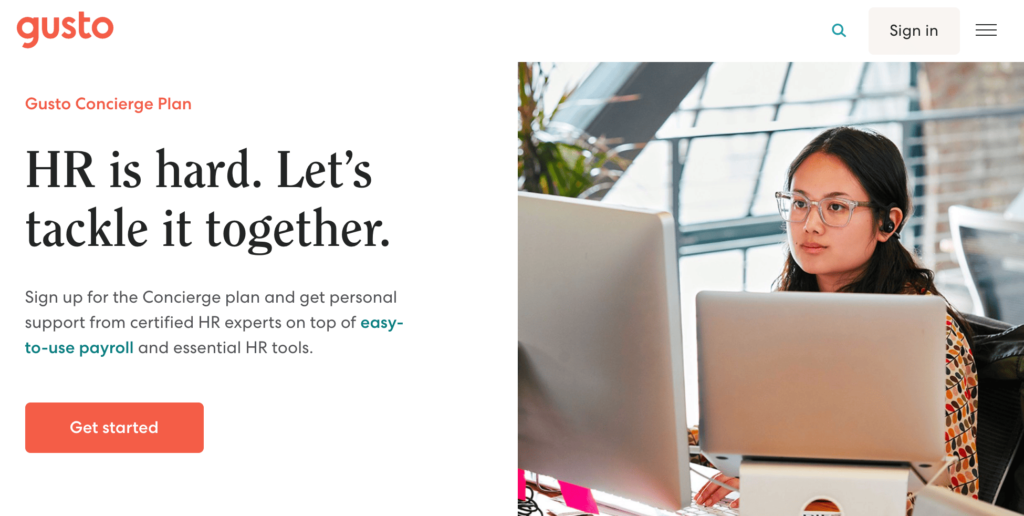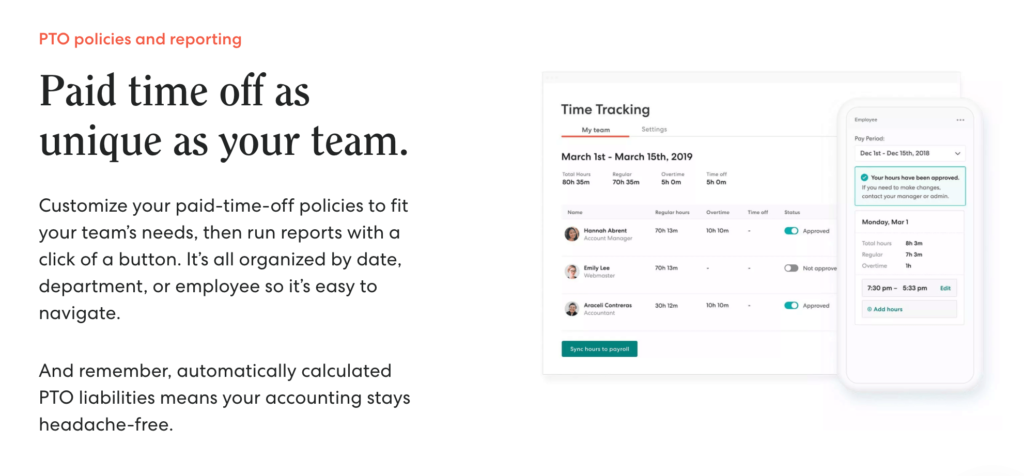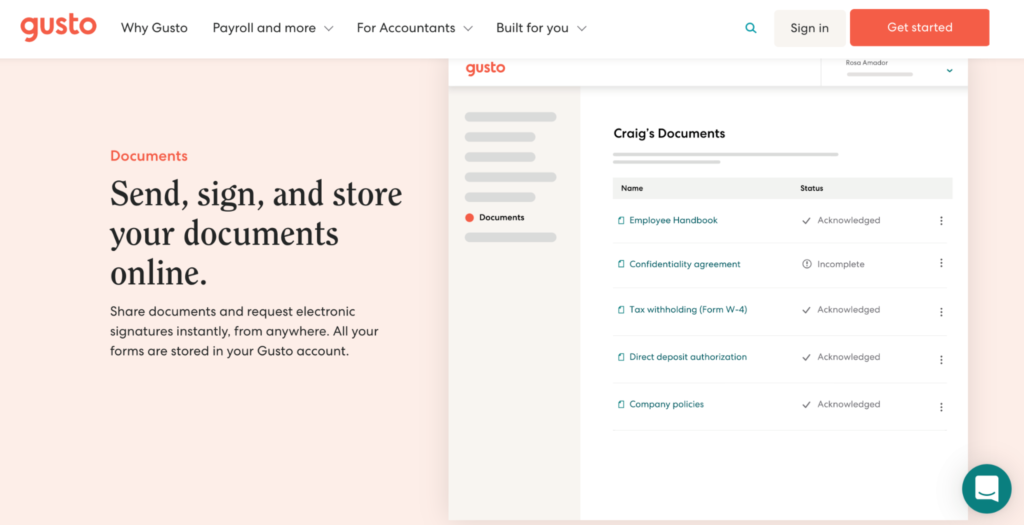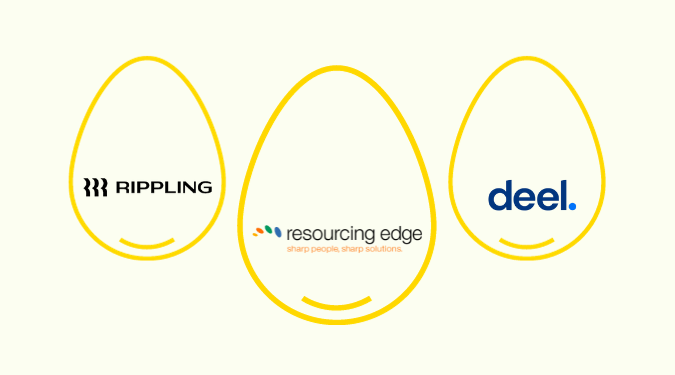Human resources is the backbone of every business. Whether you’re running a small startup or have thousands of employees, HR compliance must be a top priority.
This in-depth guide will explain everything you need to know about HR compliance, including some quick tips and long-term strategies to apply.
Why HR Compliance Is So Important
HR is responsible for every stage of the employee lifecycle. From recruiting and hiring through managing payroll, employee benefits, training, safety, workplace culture, and more, there’s a lot to keep track of.
Any business with employees must follow certain federal, state, and local labor laws to remain compliant. These laws cover things like employee classifications, sick leave laws, overtime pay, and so much more.
Failure to remain compliant can create serious problems for your business.
Not only could you face fines and penalties from various government organizations, but you’re also vulnerable to lawsuits from employees.
Since there are so many aspects of managing HR, lots of businesses struggle with maintaining compliance. But this must be a top priority for your employees and company alike because the downsides of non-compliance can be detrimental to a business.
Fines and lawsuits aside, HR non-compliance can create recruitment problems and crush morale in the workplace.
But once you have a firm grasp on HR compliance, you can rest easy knowing that all of your HR processes are in place, legally sound, and your company is protected. You’ll also benefit from easier recruiting and increased employee retention.
Quick Tips to Improve HR Compliance Today
HR compliance might feel like a tall task. But there are some quick things you can do right away that will help you achieve compliance.
The simple tips below can be applied with minimal effort and help you build momentum as you start working towards long-term HR compliance initiatives.
Tip #1 — Get the Right People on Your HR Team
Compliance starts when you have the right people in place on your HR staff. But this is a challenge for many companies, especially smaller businesses.
Rather than recruiting and hiring a completely new HR department, you can use third-party services to help you achieve compliance. Lots of the best HR software tools come with either compliance-related add-ons or HR experts included in your plan.
Gusto is an excellent option to consider in this category.

Gusto is an all-in-one solution for HR and payroll. If you sign up for their Premium plan, you get unlimited advice from live SHRM and HRCI-certified HR experts. You’ll benefit from actionable feedback, employee relations advising, and so much more.
This top-of-the-line HR package also comes with a custom employee handbook, compliant job description templates, HR guides, and policy templates.
Gusto even provides proactive compliance updates, so you’ll be notified of any new state, federal, or local laws that impact your business. Then you can make the necessary adjustments.
You will have to contact Gusto for a custom quote of their Premium plan, but they offer other plans starting at $40/month plus $6/month per employee. These other plans don’t come with the same level of hands-on HR support, but they do provide many of the tools that make staying compliant a lot easier.
Tip #2 — Establish Clear Policies and Procedures
All of your policies and procedures must be clearly documented and legally compliant. The vast majority of labor laws favor the employee, so if your policies haven’t been documented, then you can run into legal issues with state and federal mandates.
This includes things like:
- Paid time off (PTO)
- Sick leave laws
- Overtime pay
- Breaks and meal periods
- Affirmative action plans and diversity recruiting
- Sexual harassment
- Payroll compliance
- Family and Medical Leave Act (FMLA)
- Employee benefits
It’s your responsibility to put all of this in writing to remove all ambiguity. The last thing you want is for your employees to take a vacation assuming they’re getting paid, only to find out that it’s unpaid.
Employees eligible for FMLA protection can’t lose their job over the birth of a child or caring for a sick spouse.
Gusto has additional tools that can help you manage your HR policies. For example, it has built-in time tracking features that you and your staff can use to manage PTO.

If you’re on a Premium Gusto plan, the HR experts will even help you put together a custom employee handbook that covers all of your policies—ensuring compliance.
Tip #3 — Distribute the Proper Documents to New Hires
HR compliance involves a lot of paperwork—there’s no way around it.
If you’re using templates and HR experts to help you draft the paperwork, it will obviously make your life much easier. But that’s only half the battle. You still need to distribute that paperwork to your employees during the hiring process.
- Form I-9
- Non-discriminatory hiring practices (ADA, EEOC, ADEA, etc.)
- Fair Credit Reporting Act (FCRA) forms
- Employment agreements
- Form W-4 and other wage deduction forms
- Employee handbooks
- Direct deposit forms
- Health insurance forms
The list goes on and on. Getting these documents into the hands of your employees can be challenging if you’re not using the right tools.
With Gusto, you can send all of these documents to new hires within a single platform.

This eliminates the need for paper document distribution, and it keeps everything organized in one place.
Gusto has built-in electronic signature functionality, so you can have your staff sign forms and acknowledge receipt of documents online as well.
Tip #4 — Keep Organized and Accurate Records
You also need to keep an accurate and organized employee database.
These records should include things like payroll history, work attendance, time-off requests, signed I-9s and W-4s, and more. Printing and storing these records in physical folders and filing cabinets is inefficient and outdated.
If a state or federal labor law agency needs to access your records, you should be able to find what you’re looking for immediately.
HR software with a built-in employee database is the solution. These systems will automatically store the appropriate records with each employee, so there’s really no extra work required on your end.
Employees will also have direct access to their own information through an employee self-service portal. So you won’t have to worry about misplaced W-2 forms or anything like that during tax season.
Tip #5 — Correctly Classify Your Employees
One common, and fatal, HR compliance mistake is misclassifying employees. Some business owners do this intentionally to try and save money, but many do it unknowingly, which leads to lawsuits and fines.
Employees can be classified into two categories—exempt and non-exempt.
In short, exempt employees are not eligible for overtime.
According to the FLSA (Fair Labor Standards Act), non-exempt employees must be paid 1.5x times their regular pay rate for time worked over 40 hours in a workweek (called overtime).
But you can’t just pull a classification out of thin air. The way you classify your staff will be based on things like how they get paid, the type of work they do, your industry, and more.
So you can’t just decide to classify someone as exempt and not pay them overtime if the employee doesn’t fit the exempt status criteria. You also can’t classify an employee as a 1099 contractor as a way to avoid paying employment taxes and employee benefits.
Long-Term Strategies For HR Compliance
In addition to the quick tips mentioned above, there are also some long-term strategies that will help you achieve HR compliance. While these strategies require a bit more time and effort, they’re well worth it in the long run.
Strategy #1 — Make HR Compliance Part of Employee Training
Employee training is usually associated with job-specific tasks. It teaches your employees how to use different software, equipment, and things of that nature.
But compliance initiatives should also be included in training sessions. This is especially for things like OSHA compliance and workplace safety.
You can also take steps to prevent workplace incidents by informing employees about their rights in the workplace.
For example, make sure your staff is properly trained on things like sexual harassment in the workplace. An incident like this could create big problems for the accused employees and your business alike. But adequate training can help reduce the chances of an incident.
Employee training isn’t just a one-time thing for new hires. It’s something that you should do on a regular basis.
At a minimum, you can do annual training to brush up on initiatives related to HR compliance. This keeps everything fresh in the minds of your staff and shows everyone how serious your organization is about remaining compliant.
Strategy #2 — Thoroughly Review Employee Complaints
Assume all employee complaints are serious and worst-case scenario situations. Always conduct a thorough investigation.
Your investigation might ultimately tell you otherwise, but you can’t brush off formal complaints as a non-issue. They can lead to much bigger problems down the road.
For example, let’s say an employee files a complaint saying they are experiencing discrimination from management based on their race, religion, or sexual orientation.
This isn’t something you can just sweep under the rug and hope never happens again. You need to protect your employee, discipline the appropriate parties, and take steps to ensure these types of incidents don’t happen again.
Failure to act fast and appropriately can lead to expensive lawsuits. It can also damage the reputation of your organization if word gets out that these types of offenses are common occurrences.
Strategy #3 — Make Continuous Updates to Your Employee Handbook
Even if you’re following templates and getting help from HR experts, your employee handbook shouldn’t be set in stone forever.
You might leave a few things out or ultimately decide to change the wording of some sections for various reasons. New laws and regulations are constantly going into effect. So you need to be aware of what’s happening at federal, state, and local levels.
Certain workplace incidents could also prompt you to change the handbook. Only time will tell if your handbook is actually helping you maintain compliance.
While updates to your employee handbook shouldn’t be happening on a monthly or quarterly basis, you can evaluate it at least once per year—unless a pressing issue needs to be updated ASAP.
You can also discuss updates with an employment lawyer to help you ensure compliance.
Strategy #4 — Conduct HR Compliance Audits
An HR compliance audit evaluates your policies, procedures, and overall HR infrastructure.
You can do this internally with unbiased staff. But it needs to be done by people who aren’t directly involved in HR operations. Those people will be less likely to spot and report their own errors.
The goal here is to find any holes or gaps in your HR process. Maybe you’ll learn that employee health records aren’t being kept somewhere that’s HIPAA compliant. Or you might discover that one or two employees have been incorrectly classified.
Examples of areas to cover during the audits include:
- Recruiting, hiring, and onboarding policies
- Payroll compliance
- Employee safety
- Management training
- Employee benefits administration
- Unemployment benefits
- Sexual harassment, bullying, affirmative action, EOO/OFCCP, etc.
- ADA compliance and VA employment
- Employee files
- OSHA compliance
- HIPAA compliance
- FLSA compliance
The list will vary based on your business type, industry, number of employees, location, and more.
So it’s helpful to come up with an HR compliance checklist that’s specific to your organization. This will make your audits run smoother.
You can conduct HR audits on an annual basis and make the appropriate adjustments in your findings to avoid non-compliance issues.
Next Steps
As mentioned above, HR compliance initiatives should be included during employee training sessions. Using the right tools for employee training will make your life much easier. So check out our guide on the best training software.
Some of you might want to outsource your HR department altogether and let an established firm manage HR compliance on your behalf. If you fall into this category, our list of the best HR outsourcing services is a must-read.














